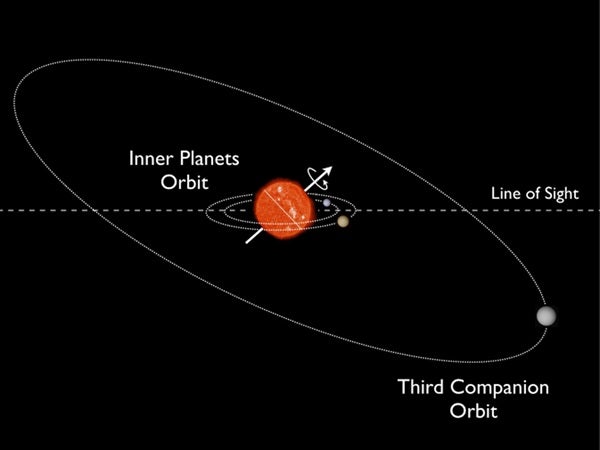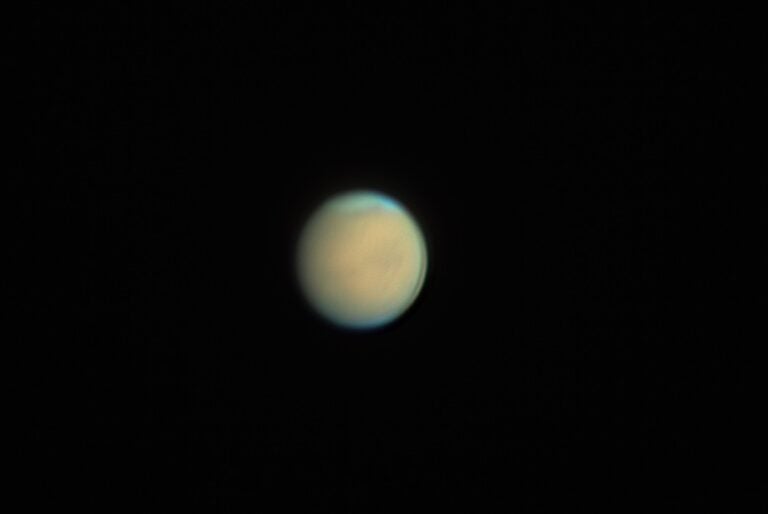This theory was challenged when the orbital plane of hot Jupiters was discovered to be frequently misaligned with the equator of their host stars. Scientists interpreted this as evidence that hot Jupiters are the result of chaotic close encounters with other planets.
A decisive test between the two theories are systems with more than one planet: If misalignments are, indeed, caused by dynamical perturbations that lead to the creation of hot Jupiters, then multiplanet systems without hot Jupiters should be preferentially aligned. What new research reveals is quite different.
Using data from the NASA’s Kepler space telescope, an international research team led by Daniel Huber from NASA’s Ames Research Center in Moffett Field, California, studied Kepler-56, a red giant star four times larger than the Sun located at a distance of approximately 3,000 light-years from Earth. By analyzing the fluctuations in brightness at different points on the surface of Kepler-56, Huber and his collaborators discovered that the star’s rotation axis is tilted by about 45° to our line of sight.
“This was a surprise because we already knew about the existence of two planets transiting in front of Kepler-56. This suggested that the host star must be misaligned with the orbits of both planets,” said Huber. “What we found is quite literally a giant misalignment in an exoplanet system.”
The culprit for the misalignment is suspected to be a third massive companion in a long period orbit, revealed by observations obtained with the Keck telescope on Mauna Kea, Hawaii.
“Computer calculations show the outer companion may have torqued the orbital planes of the transiting planets in concert, leaving them co-planar but periodically misaligning them with the equator of the host star,” said Daniel Fabrycky from the University of Chicago.
Nearly 20 years after the discovery of the first hot Jupiter, the giant misalignment in the Kepler-56 system marks an important step toward a unified explanation for the formation of hot Jupiters.
“We now know that misalignments are not just confined to hot Jupiter systems,” said Huber. “Further observations will reveal whether the tilting mechanism in Kepler-56 could also be responsible for misalignments observed in hot Jupiter systems.”










